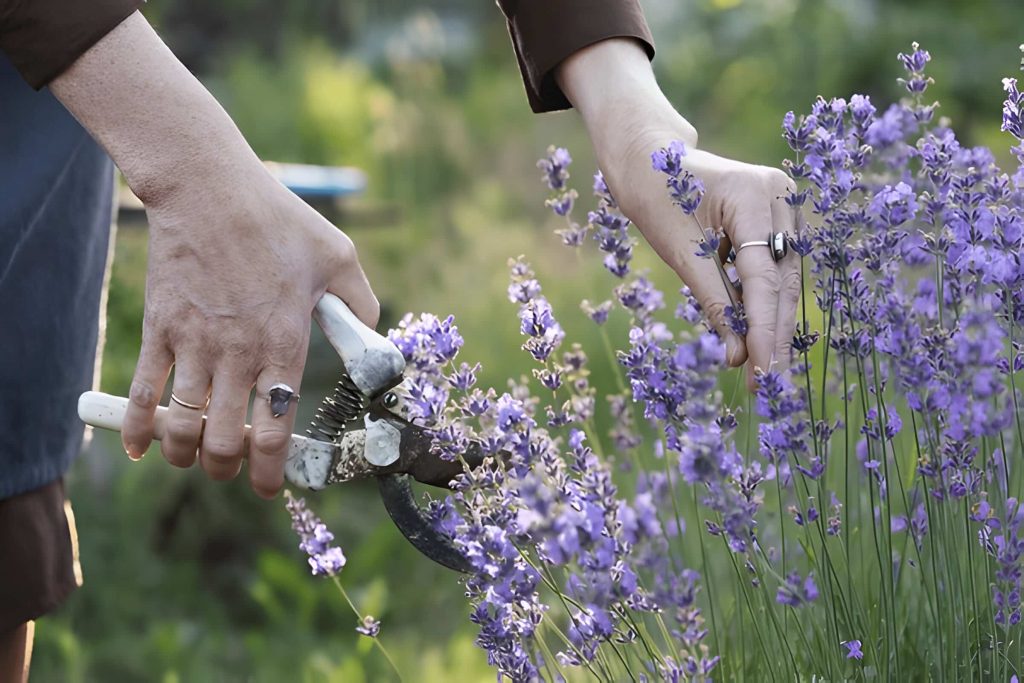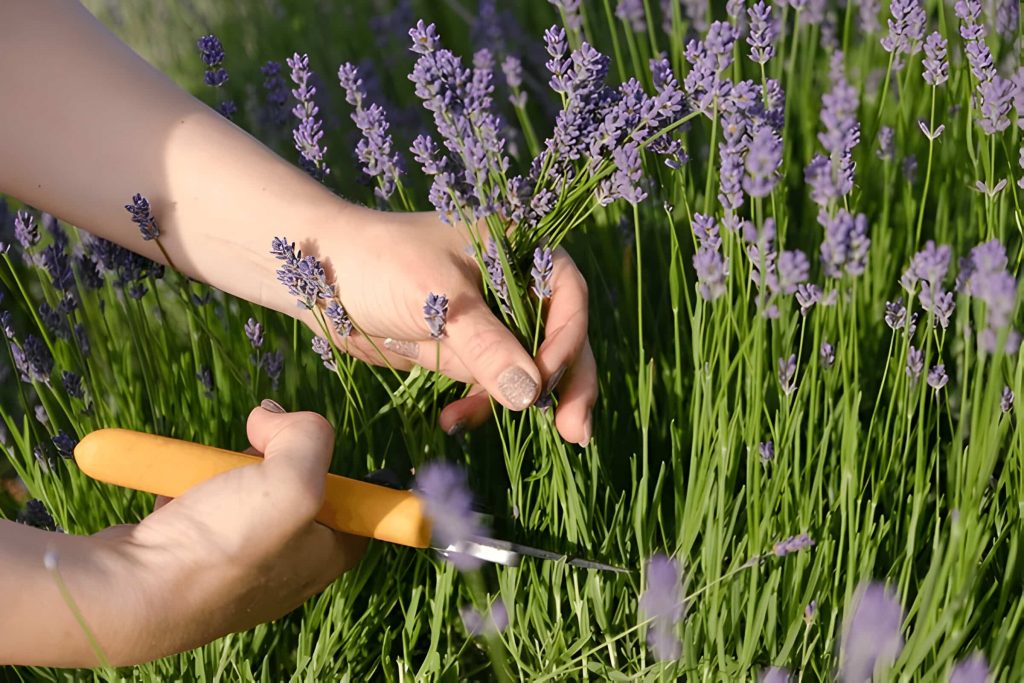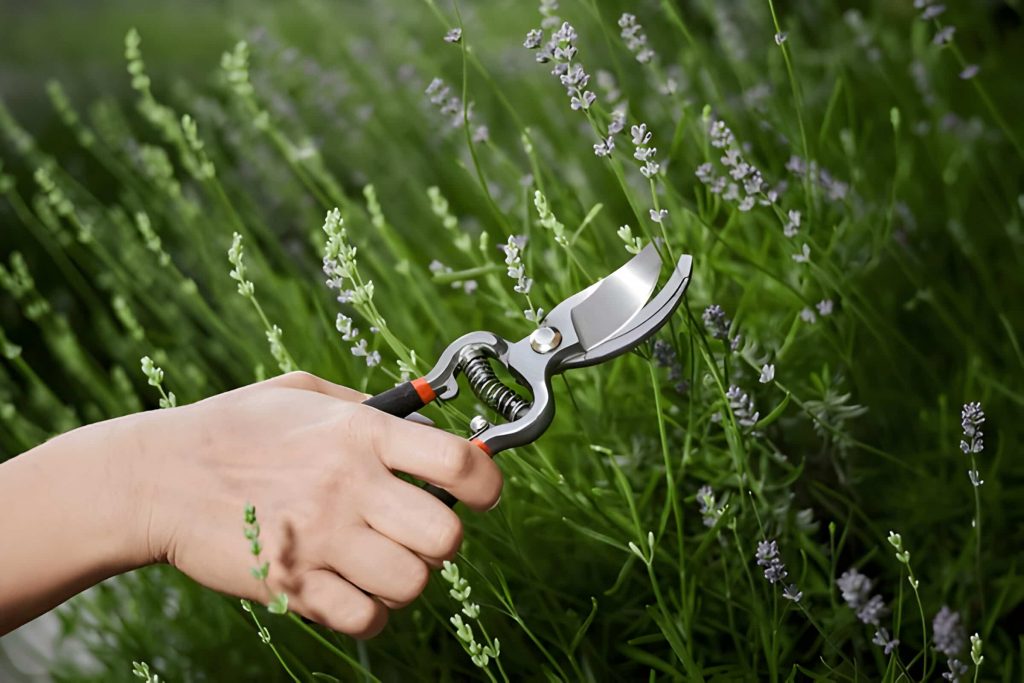
Lavender, with its calming fragrance, vibrant blooms, and tidy growth habit, is a beloved garden staple. While this aromatic herb is relatively low-maintenance, proper pruning lavender is essential for maintaining its health, shape, and abundant flowering. Regular pruning not only encourages lush growth but also prevents the plant from becoming woody and leggy. Let’s explore the art of “how and when to prune lavender” to ensure your plant thrives for years to come.
How and when to prune lavender depends on the specific type you grow. Generally, it’s best to prune after flowering, allowing you to shape the plant and encourage new growth. However, some lavender varieties benefit from spring pruning. By understanding your lavender’s needs and following the right techniques, you can enjoy a profusion of fragrant blooms year after year.
How and When to Prune English Lavender (Lavandula angustifolia)

English lavender, renowned for its captivating fragrance and silvery foliage, is a garden staple. To maintain its health, shape, and continuous flowering, regular pruning is essential. By encouraging new growth and preventing woody stems, pruning helps extend the life of your lavender plant. To achieve a bushy, blooming plant, prune English lavender twice a year. The first pruning should occur immediately after the initial bloom cycle ends, typically in early summer. The second pruning is best timed for late August, once the final flush of flowers has faded. Beyond its aesthetic benefits, pruning also provides excellent material for lavender propagation. Stem cuttings taken from healthy, pruned lavender can be rooted to create new plants, expanding your lavender garden.
When pruning English lavender, aim to remove approximately two-thirds of the plant’s height. Alternatively, you can cut back to the second set of leaves on each stem. It’s crucial to avoid pruning into the woody part of the plant, as this can damage it and hinder new growth. By consistently pruning your lavender twice a year, you’ll promote a healthy, compact plant with a profusion of fragrant flowers.
- Choose your tools: Use sharp, clean pruning shears or secateurs.
- Remove spent flowers: Cut back the flower stalks to just above a set of leaves.
- Shape the plant: Cut back the plant by about one-third to one-half of its height. Aim for a rounded shape.
- Avoid woody growth: Be careful not to cut into the brown, woody part of the plant.
- Clean up: Remove any fallen leaves or debris around the plant.
How and When to Prune English Hybrids (Lavandula x intermedia)

The glam, later flowering lavender (Lavandula x intermedia) or English lavender hybrids, known for their long-lasting blooms and graceful form, are a stunning addition to any garden. To maintain their shape and encourage continued flowering, proper pruning is essential.
The ideal time to prune English lavender hybrids is in late summer, once flowering has finished. This typically occurs in August. Pruning at this time allows the plant to recover before winter and encourages new growth for the following season. English lavender hybrids are less hardy than their pure English counterparts, so a gentle approach is necessary. Here’s a step-by-step guide for How to prune English Hybrids:
- Avoid harsh pruning: Cutting back into the woody part of the plant can damage it, so be careful not to prune too deeply.
- Shape the plant: Aim to reduce the plant’s height by about half, leaving plenty of green foliage intact. This will help maintain a tidy, rounded shape.
- Clean cuts: Use sharp, clean pruning shears to make precise cuts and prevent disease.
By following these steps, you can maintain the health and beauty of your English lavender hybrids. Regular pruning will reward you with a plant that looks its best throughout the year.
How and When to Prune Non-English Lavender (French, Spanish)

Tufted lavenders are a gardener’s delight, boasting full, thick flower spikes that bloom generously from late spring through fall. Their diverse fragrances, sizes, and colors make them a versatile addition to any garden. However, these delicate plants require a gentler pruning approach compared to their hardier counterparts.
Unlike many other lavender varieties, tufted lavenders are less tolerant of harsh pruning. To maintain their health and encourage continued blooming, it’s best to prune them after their initial flowering period. This typically occurs in late spring or early summer. A light touch is essential when pruning spanish or french lavender. Here’s a step-by-step guide for How to prune non- English lavender:
- Post-bloom trim: Once the first flush of flowers fades, carefully remove spent blooms to prevent seed production and encourage new growth.
- Avoid heavy pruning: Unlike hardier lavenders, tufted varieties do not benefit from a hard cutback. Excessive pruning can damage or even kill the plant.
- Regular deadheading: Continue to remove spent flowers throughout the growing season to promote continuous blooming and maintain the plant’s appearance.
- Late summer shaping: In late summer, gently shape the plant by removing any long, straggly stems to maintain a tidy and compact form.

By following these gentle pruning techniques, you can enjoy the beauty and fragrance of your tufted lavenders for years to come. Remember, patience and a light hand are key to the successful care of these delicate plants.

I didn’t realize how important it is to prune lavender in early spring and after blooming. My plants are going to look so much better now!